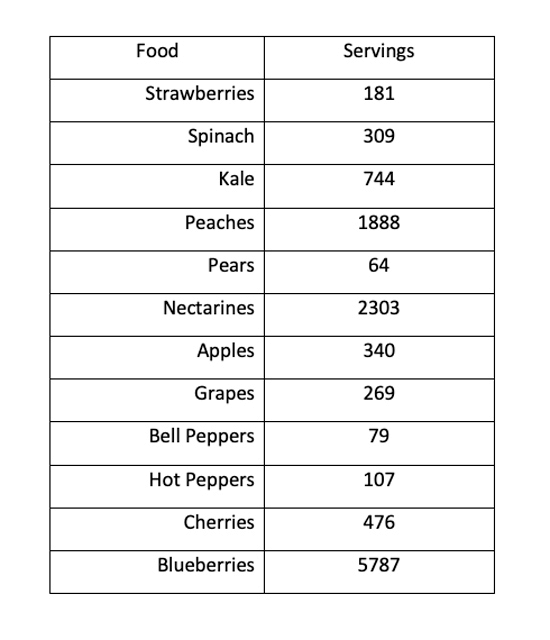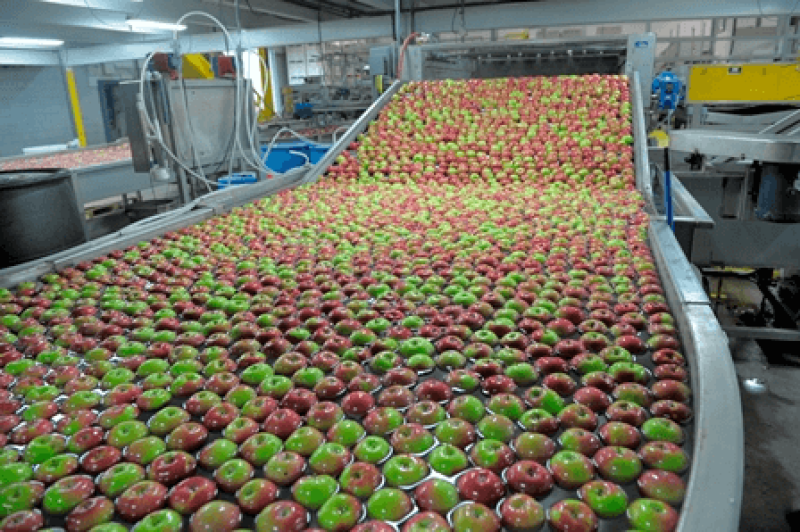a child could eat hundreds to thousands of servings of a fruit or vegetable in a day, which shows how minute residues are on produce, if they are present at all.
The most popular group spreading misinformation regarding conventionally grown produce safety is the Environmental Working Group (EWG), best known for its annual Shopper’s Guide to Pesticide Residue, which the national media naively publishes yearly. Let’s look at just three tidbits of misinformation the EWG relies on to sway public opinion to embrace organics as a superior product. The following claims are taken from their March 15, 2023 report.
Claim: “Nearly 75 percent of non-organic fresh produce sold in the U.S. contains residues of potentially harmful pesticides.”
Fact: As described by Dr. Bruce Ames, yes, the Ames of the standard test for genotoxicity, 100% of fresh produce, either organically grown or conventionally, contain pesticides. Dietary pesticides are 99.99 percent natural, as they are chemicals that plants produce to defend themselves. Thousands of these natural pesticides have been discovered; every plant species has perhaps two dozen. Additionally, natural pesticides are measured in parts per thousand or million rather than parts per billion (ppb), used for synthetic pesticides.
Claim: “Any exposure to pesticides is a problem.”
Fact: All pesticides, naturally occurring or synthetic, are inherently hazardous, but this is dependent upon the dose or exposure – a moot point due to the amount of food one must ingest for this to be of concern. Additionally, “there is a tendency for non-scientists to think of pesticides as only being synthetic and to characterize them as toxic, ignoring the fact that every natural pesticide has a threshold at which it, too, becomes toxic.” For instance, tomatine, a natural chemical found in tomato leaves, stems, and fruit, which protects the tomato from predators, is present at 36 mg per 100 grams of tomato. Still, there is scant evidence that it causes problems.
Claim: The EWG provides several fruits and vegetables, its annual “Dirty Dozen,” which they consider to be the “most contaminated with pesticides.” Noting that children “are particularly vulnerable to many of the health harms associated with pesticide exposure.”
Fact: While it is true that children, because of their lower body weight and still developing physiology, are vulnerable to health harm, it is beyond misleading to suggest that children eating their fruits and vegetables are exposed to any significant risk. To answer this false statement, the following information from the Pesticide Residue Calculator, provided by the Alliance for Food and Farming (AFF), will be helpful. The AFF is a non-profit working with organic and conventional farmers to promote fruits and vegetables. It does not involve itself in regulatory or legislative affairs. The toxicologists developed the calculator based on an analysis performed by toxicologists with the Personal Chemical Exposure Program at the University of California, demonstrating how safe it is to eat any fruit or vegetable.

It is important to understand that the toxicologists created a worst-case scenario for their calculations below. In other words, the servings provided below assume the food item selected contains the highest pesticide residue allowed on each produce item, which, in reality, rarely occurs. The highest allowable pesticide level, the “No Observed Adverse Effect Level,” is where the pesticide “will not produce a response in a living organism.”
The EWG listed the following produce items in 2023 as the “most contaminated.” Adjacent to each produce item is the number of servings established by toxicologists, which a child could consume in one day without any effect, even if the item had the highest pesticide residue recorded by the USDA.
The obvious takeaway is that fabricated fear, not facts, is being used to manipulate consumer behavior, especially in harm “to the children.” We are hardwired to respond to fear. Appeals to fear effectively influence attitudes, intentions, and behaviors and rarely are ineffective. EWG and the organic industry know that arousing parental concerns about their children’s potential health and safety, regardless of how baseless those fears are, will motivate many parents to adopt the organic message. However, I believe any reasonable person would agree that the USDA safe daily portion serving examples for children should show that our fruits and vegetables are safe and make any reasonable person confident that there is no need to spend roughly 40% more of your already limited food budget on organics.
Sources:
Pesticide Data Program Annual Summary Calendar Year 2022 USDA
Dietary Pesticides 99.99 Percent Natural Pesticide Facts
David Lightsey M.S., a Food and Nutrition Science Advisor with Quackwatch.org, is the author of “The Myths About Nutrition Science.”
A version of this article was originally posted at the American Council on Science and Health and is reposted here with permission. Any reposting should credit both the GLP and original article. Find the ACSH on X @ACSHorg































